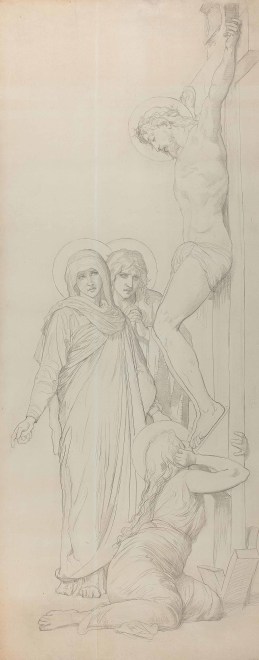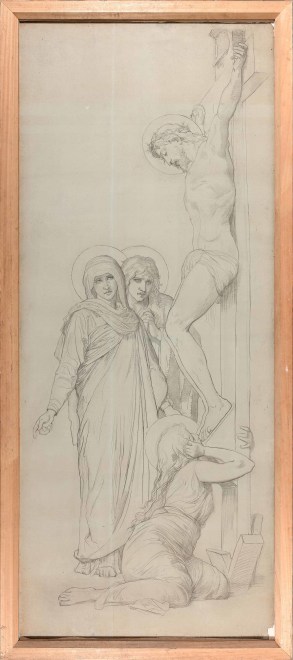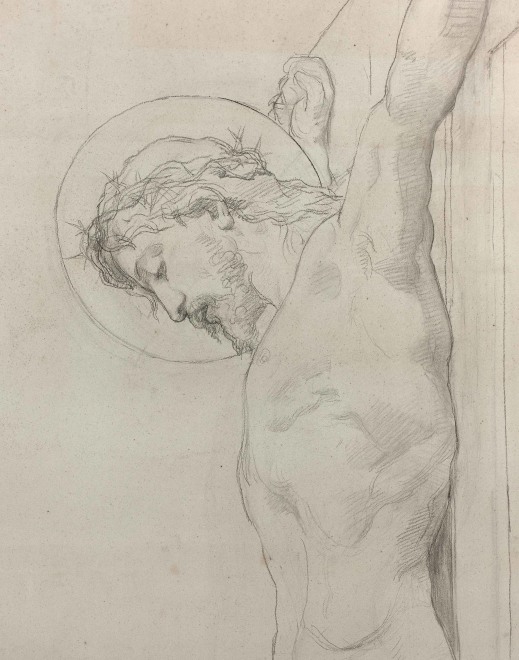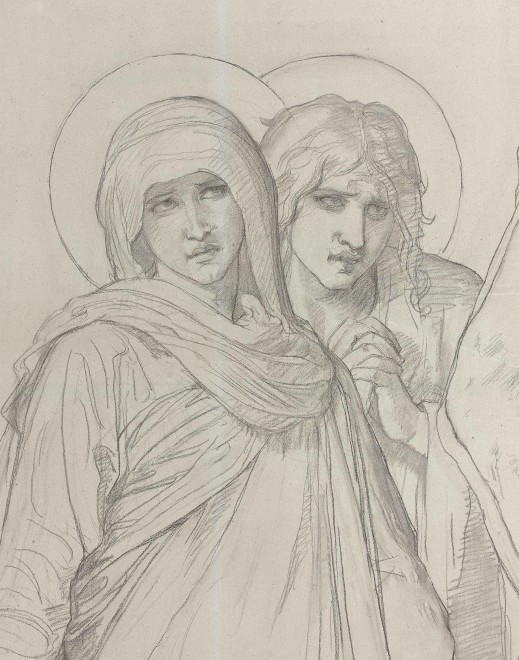Provenance
The artist’s studio
The descendants of the artist
Exhibited
Paris, Musée du Petit-Palais, William Bouguereau – 1825-1906, 9 February-6 May 1984, no. 118. Mentioned in exh. cat. pp. 93-94 and 118.
Catalogue note
Bouguereau received decorative commissions – both sacred and secular – throughout his long career. He designed and painted the interiors of private mansions and was put in charge of the decoration for three major Paris churches – St. Clotilde, St. Augustin, and St. Vincent de Paul. For each one of these projects, Bouguereau would execute numerous preparatory drawings and oil sketches, as well as large scale cartoons done to scale for the final images in the church. Our cartoon was for The Virgin at the Foot of the Cross for the Lady Chapel in St Vincent de Paul, Paris.
The church had been consecrated in 1844, and the decorative cycle of paintings was completed by Hippolyte Flandrin and François-Édouard Picot in 1853. The architect, Édouard Villain was later hired to design the Lady Chapel in 1870 and following the Franco-Prussian War, discussions commenced over the paintings “for the new chapel [which] must be confided to one of several artists of the highest standing.” (See Georges Brunel, “Bouguereau the Decorator of Parisian Churches”, in William Bouguereau, Paris, 1984, exh. cat, p. 92). Interestingly, unlike the previous decorations for St. Clotilde and St. Augustin, which relegated the paintings to the architectural confines of the churches, the St. Vincent de Paul cycle instead consisted of eight large-scale paintings depicting scenes from the Life of the Virgin. The series was begun in 1884 and completed in 1889 with The Marriage of the Virgin and The Virgin at the Foot of the Cross.
The representation of the Virgin at the Foot of the Cross was a subject that appeared frequently in old master paintings, either as part of the pictorial cycle depicting the life of the Blessed Virgin or as a stand-alone painting of the Crucifixion. Mary was frequently shown prostrate from her grief, surrounded by St. John and Mary Magdalene. Bouguereau would have been familiar with such earlier representations of the scene but instead chose to “illustrate Mary’s spiritual strength rather than the suffering she had to endure, thus inspiring the faithful to courage as well as to compassion. Having only a narrow space to work in, Bouguereau tightened his composition and presented, with one exception, only vertical figures; only Mary Magdalene is seated on the ground, clinging to the foot of the Cross and kissing the Saviour’s feet. The Cross and the body of Christ are seen almost in profile, while the Virgin and St. John face the viewer. The apparently simple composition nevertheless shows great skill in making the Virgin the principal figure of the Crucifixion.” (Ibid).
Bouguereau’s paintings in the Church of St. Vincent de Paul are currently undergoing a major restoration campaign, with several of the images already returned to the vibrant colors that Bouguereau intended.








